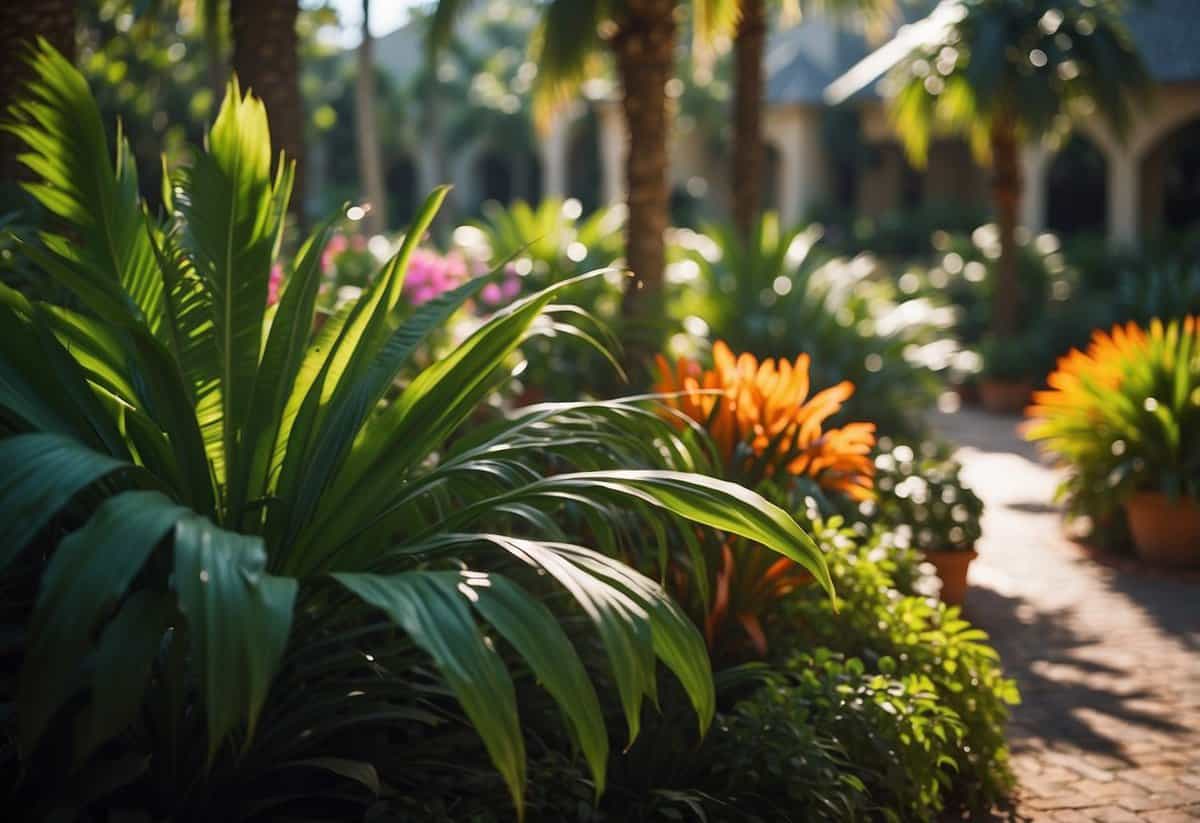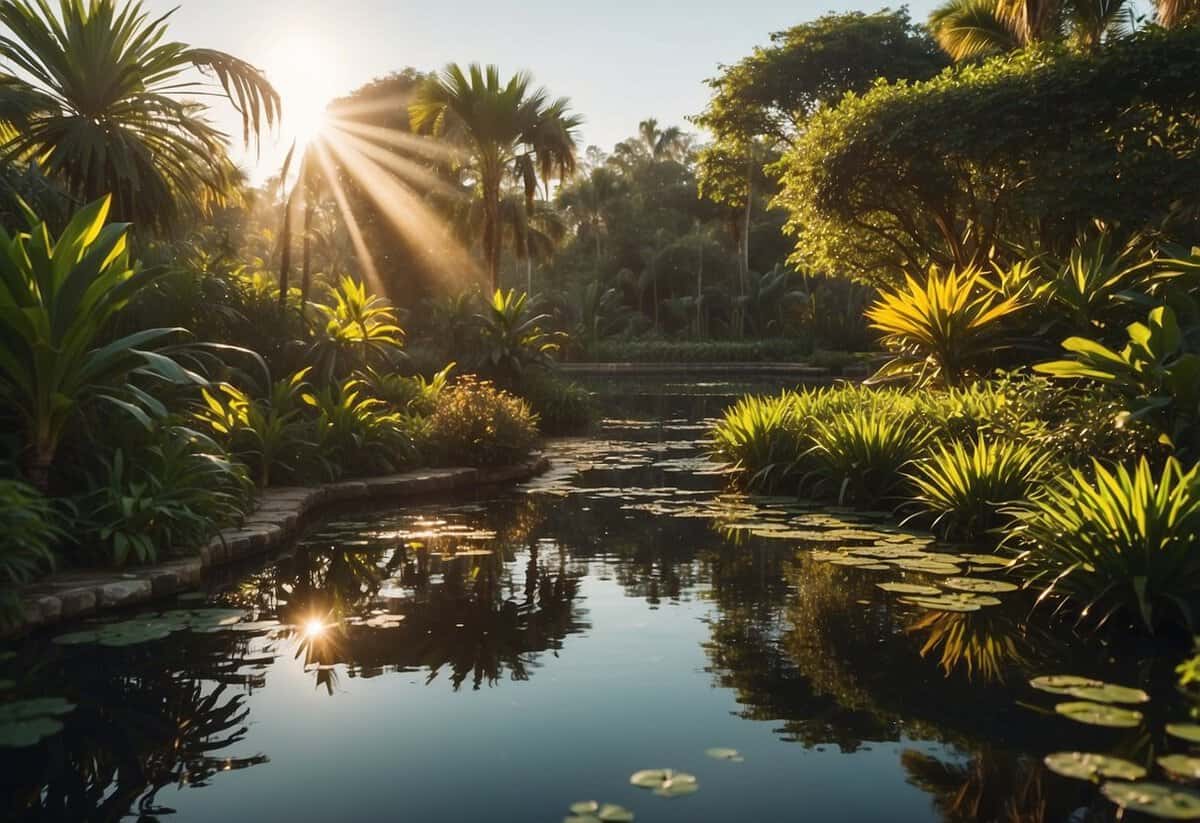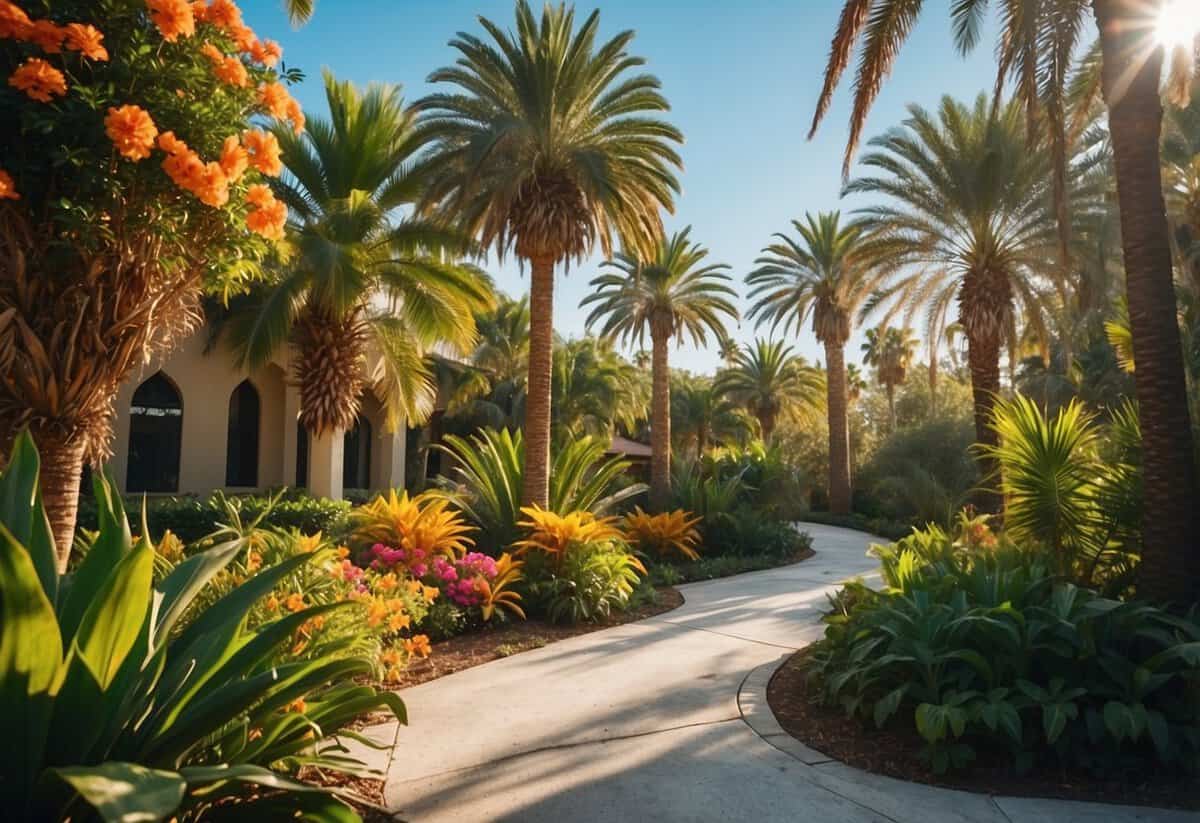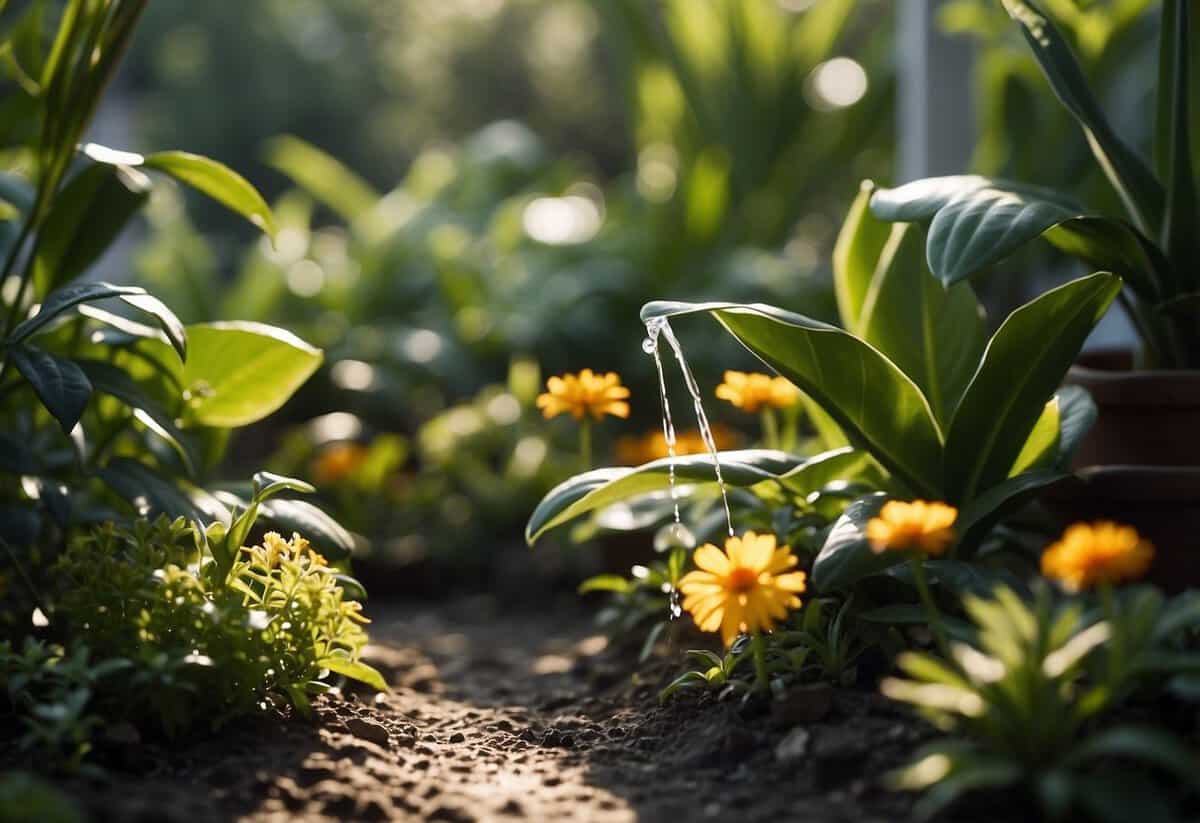Florida Garden Tips: Growing a Thriving Tropical Oasis
Gardening in Florida can be both rewarding and challenging due to its unique climate and soil conditions. Whether you are in the frost-free southern areas or the northern regions that experience regular freezes, it’s important to understand the local growing environment.

With the right tips and tricks, you can create a beautiful and productive garden that thrives in the Florida sun. From choosing the best plants for your zone to managing pests and diseases, this guide will help you make the most of your Florida garden.
1) Plant Native Species

When planning your Florida garden, consider planting native species.
Native plants adapt better to local conditions, making them easier to maintain. They require less water and are more resistant to pests.
For dry areas, try Sandhill Milkweed. For wetter spots, Water Hyssop thrives well.
You see, native plants also attract local wildlife like butterflies and bees, making your garden more vibrant and lively.
2) Use Organic Mulch

Organic mulch is great for your Florida garden. It helps keep the soil moist by reducing water evaporation. Plus, it can enrich the soil as it breaks down.
Consider using pine bark or pine straw. They are natural options and add nutrients over time. You can also use cypress mulch or organic compost. Each type has its benefits.
Spread the mulch evenly around plants, keeping it 2 to 4 inches thick. Avoid piling it against plant stems to prevent rot. Happy gardening!
3) Install Drip Irrigation

Installing drip irrigation in your Florida garden can be a game-changer. It efficiently waters your plants by delivering water directly to their roots.
To start, connect the headers to the water source using a garden hose. This helps ensure a secure, leak-free connection.
Remember, drip irrigation is especially useful for planting beds and uses less water than typical sprinkler systems. Learn more about setting up your system here.
4) Choose Heat-Tolerant Plants

When gardening in Florida, it’s important to pick plants that can handle the heat. Some good choices include zinnias, blanket flowers, and milkweed. These can handle high temperatures and limited water.
Sweet potatoes are another great option. They are known to thrive in hot conditions and are quite resilient.
For flowering plants, consider gerbera daisies or canna lilies. These sun-loving plants will brighten up your garden and are perfect for hot climates.
5) Prune Regularly

Pruning is important for keeping your Florida garden healthy and looking good. Remove dead or damaged branches to help your plants grow better.
For non-flowering shrubs, prune them during the dormant season, like late winter or early spring. Fast-growing shrubs may need trimming every 1-2 months.
Choose a mild, overcast day for pruning to reduce stress on the plants. Using clean tools can prevent the spread of diseases.
Avoid over-pruning and never “top” trees, which can harm their growth. Regular pruning helps ensure your garden stays neat and vibrant. Use the right techniques to keep your garden flourishing!
6) Fertilize Appropriately

For a healthy Florida garden, it’s crucial to fertilize your plants properly. Choosing the right fertilizer depends on your plant types and the soil’s nutrients.
When fertilizing, remember to follow the label instructions closely to avoid over-fertilizing, which can harm plants and the environment. Also, consider using slow-release fertilizers for longer-lasting effects.
Applying fertilizer at the right time is also important. For example, many flowering plants benefit from fertilization during their active growing season. This ensures they get the necessary nutrients when they need them most.
7) Manage Pests Naturally

Keeping your garden clean is one of the best ways to manage pests naturally. Remove leafy debris, dead plants, and other decaying material. This helps deter many pests from making a home in your garden.
You can also use beneficial nematodes. These microscopic worms can attack and kill over 200 species of harmful insects and larvae.
Another method is to use diatomaceous earth. Sprinkling this around your plants can create a barrier for crawling insects like stinkbugs. For more tips, check out these natural pest control strategies.
8) Space Plants Properly

Give each plant enough room to grow. Crowded plants can struggle to get the nutrients and sunlight they need.
Check the spacing requirements on plant labels. Follow these guidelines to keep your garden healthy.
If you’re planting in rows, leave enough space between them for easy access and maintenance. This helps prevent damage to your plants.
9) Water Early in the Day

Watering your garden early in the day is important. The best time is between 4 a.m. and 10 a.m.
Watering in the morning helps reduce water loss. It allows the plants to absorb moisture before the hot sun comes up.
Your plants will have time to dry off during the day. This helps prevent diseases caused by dampness.
10) Provide Shade for Young Plants

Young plants in Florida often need some shade to protect them from the strong sun. Using shade cloth, garden umbrellas, or even strategically placed taller plants can help.
This way, your young plants won’t get scorched and can grow strong. Mulching can also help retain soil moisture and keep roots cool during hot days.
Make sure to monitor the needs of each type of plant, as some may need more shade than others.
For more ideas on shade plants, check out this detailed guide.
Understanding Florida’s Climate

Florida’s climate is diverse and varies from North to South. Knowing about its seasonal weather patterns and the best growing seasons helps you create a thriving garden.
Seasonal Weather Patterns
Florida has a unique climate with notable differences between the northern and southern regions. In North Florida, winters can be cold with occasional frosts, while the summers are hot and humid. South Florida, on the other hand, enjoys a tropical climate with mild winters and hot, humid summers.
Rainfall is common during the summer months, especially from June to September. It’s essential to plan for this heavy rainfall as it can impact your plants. Hurricanes and tropical storms are also considerations, particularly from June to November. Ensuring your garden can withstand these conditions is key.
Best Growing Seasons
Florida’s mild climate allows for year-round gardening. In North Florida, the best growing season is from late winter to early spring. This is when temperatures are cooler and less humid, making it ideal for vegetables like lettuce and broccoli.
In Central and South Florida, you can grow plants almost year-round, but the peak season is fall through spring for many fruits and vegetables. The cooler months are perfect for planting tomatoes, peppers, and strawberries. Hot months may be ideal for tropical fruits and certain heat-tolerant plants like okra.
Choosing the right season for planting helps ensure your garden prospers in Florida’s unique climate. Check out the Florida growing season chart for detailed information.
Soil Preparation Tips

Preparing your soil properly involves picking the right type of soil and adding amendments to ensure your plants get the nutrients they need.
Choosing the Right Soil Type
Identifying your soil type is crucial. In Florida, soil can vary, but it’s often sandy. Sandy soil drains quickly and doesn’t hold nutrients well. You can also find areas with clay or silt, which behave differently. To determine your soil type, squeeze a handful of damp soil. Sandy soil falls apart, while clay soil stays compact. Silt feels smooth and often retains its shape.
For Florida gardens, you usually deal with Myakka soil, which is sandy. This type is native to Florida and covers a large part of the state. Keep in mind, the characteristics of your soil will affect water retention and nutrient availability. Hence, knowing your soil type helps in managing your garden more effectively.
Soil Amendments and Fertilization
To improve the quality of your sandy Florida soil, you need to add organic matter. Compost and aged manure are excellent options. They not only enrich the soil with nutrients but also help in retaining moisture. Spread a 2-3 inch layer of compost over your garden and mix it into the top 8-12 inches of soil.
Additionally, test your soil for nutrient levels. Kits are available at gardening centers. Based on the results, you might need to add specific fertilizers. Nitrogen, phosphorus, and potassium are the main nutrients plants need. Choose a balanced fertilizer or one tailored to your soil’s needs.
Regularly adding organic matter every season and testing your soil ensures your garden stays nutrient-rich and productive. For more tips on preparing your garden soil, visit Florida Garden Pro.
Watering Guidelines

Proper watering is crucial for a healthy Florida garden. We’ll cover the best irrigation techniques and tips for conserving water.
Irrigation Techniques
Using the right irrigation methods can keep your plants healthy and thriving. For Florida gardens, consider micro-irrigation systems. They deliver water directly to the plant roots, minimizing waste. Check your equipment regularly to avoid leaks and clogs.
Early morning watering is ideal. It allows the soil to absorb water before the sun gets too hot. Avoid watering in the evening because it can lead to fungal growth. Adjust your watering schedule based on rainfall and soil moisture. This helps prevent overwatering.
Tips:
- Use a timer to ensure consistent watering.
- Water deeply but less frequently to promote strong roots.
- Monitor your garden for signs of water stress.
Conserving Water in Your Garden
Conserving water is essential for both the environment and your garden’s health. First, consider using mulch around your plants. Mulch helps retain soil moisture and reduces evaporation.
Planting drought-tolerant plants can also make a big difference. These plants require less water and can survive dry periods. Look for native Florida species, as they are best suited to the local climate.
Strategies for Water Conservation:
- Install a rain barrel to collect rainwater for garden use.
- Group plants with similar water needs together.
- Use drip irrigation instead of overhead sprinklers to reduce water loss.
By following these tips, you can maintain a beautiful garden while conserving water.







